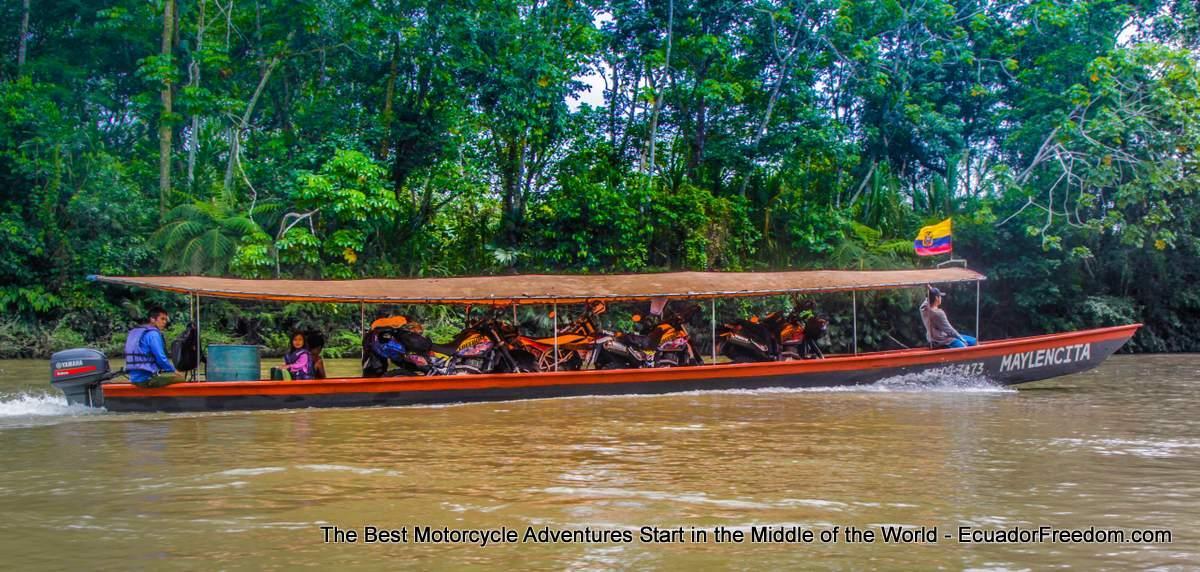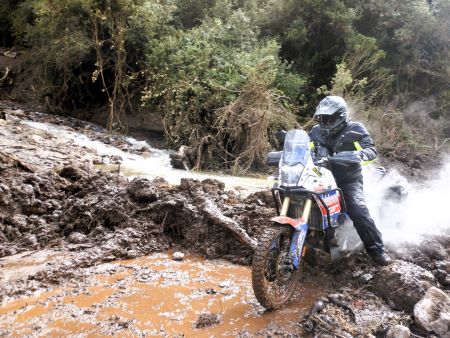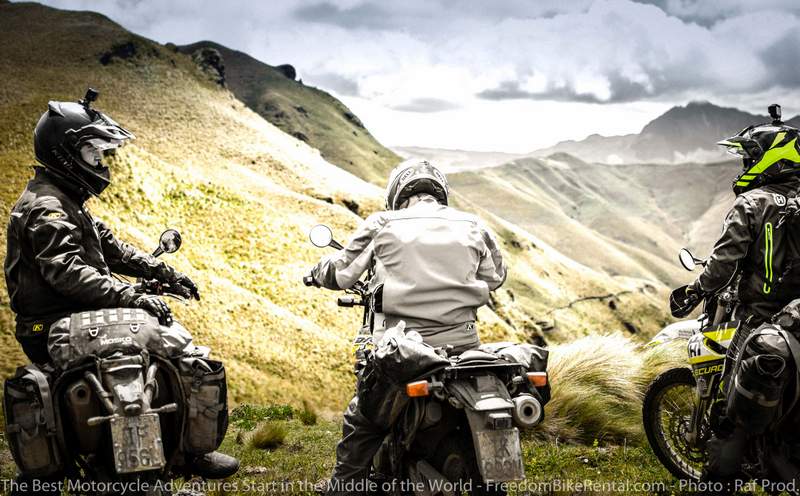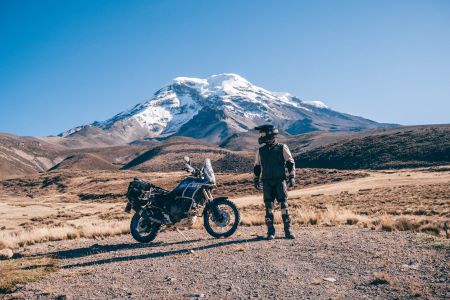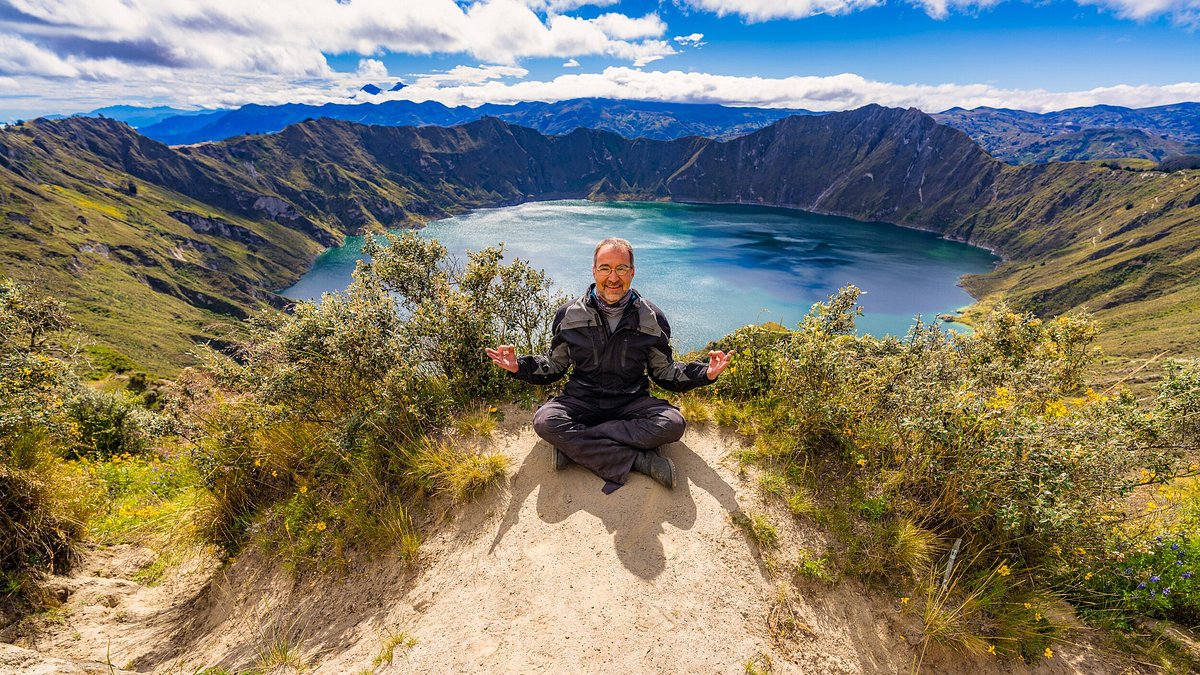
An Adventure in Eating-Traditional Food of the Ecuadorian Amazon Jungle
 A big part of any motorcycle adventure to the Ecuadorian Amazon basin is the food. It is an exotic place where the geography, the climate, the culture, and the exuberant availability of produce, fish, and spices come together to give food lovers new flavors to savor. The cuisine here is very different, being isolated and away from the Spanish influence that affected the rest of the country’s cuisine.
A big part of any motorcycle adventure to the Ecuadorian Amazon basin is the food. It is an exotic place where the geography, the climate, the culture, and the exuberant availability of produce, fish, and spices come together to give food lovers new flavors to savor. The cuisine here is very different, being isolated and away from the Spanish influence that affected the rest of the country’s cuisine. 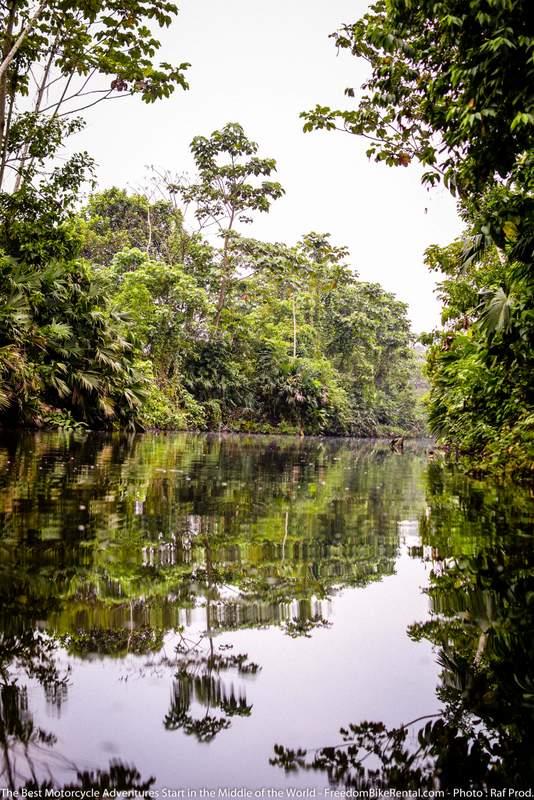
The people of the Amazon have always used what they had locally for their meals. More than 800 kinds of fish, 4000 fruits, and countless edible plants thrive in the Ecuadorian jungle. Wild ginger, garlic, ginger, peanuts, edible ferns, vanilla, amazon cinnamon, 25 kinds of peppers, and starches, including yucca and plantains, grow here.
To understand the Amazon's traditional dishes, you need to understand the people and the area where they live. A few decades ago, there were few roads, and getting back and forth to cities to find supplies readily available in the rest of the country meant an arduous journey.
The A’ I Kofan, Secoya, Siona, Waorani, Shuar, Kichwa, and Siekopaai indigenous groups live in the Amazon and two tribes that remain in isolation to this day: the Taromenane and the Tagaeri.
Some of these are hunter-gatherers, taking to the forest in search of wild boar, monkeys, and snakes and to the river for turtles and fish. Others, like the Waorani, grow cacao and have increased their quality of life by producing gourmet chocolate that’s now distributed worldwide. Chocolate originated in the jungle and made its way up to Central America after the Mayo-Chinchipe people traded cacao beans with people on the coast.
Different communities have embraced international travelers' interests and created jungle lodges that benefit villages' education and medical needs up and down the Napo River. Keep reading for a handful of traditional dishes from the "Oriente" - what Ecuadorians call the part of their country located in the Amazon basin.
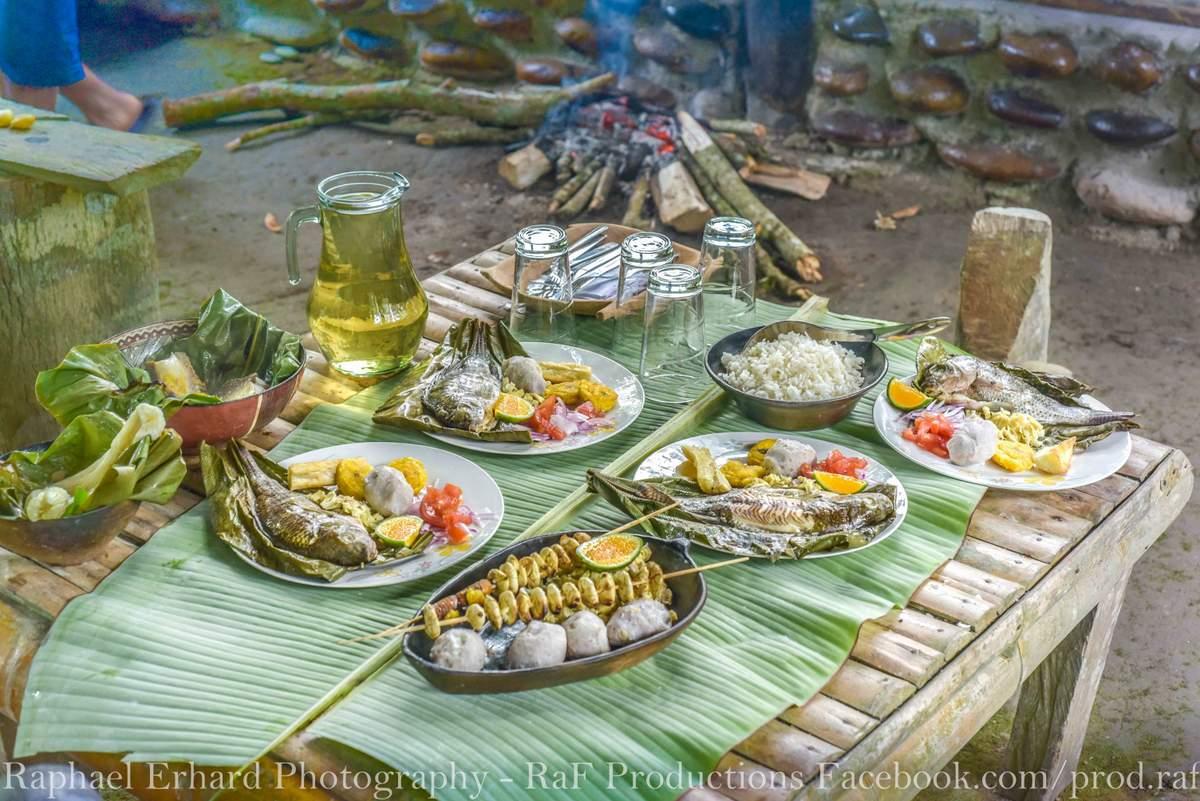
Maito
Maito is tilapia Amazon-style. It is not a native species of the jungle but rather introduced after being let loose from fish farms, red tilapia, and maito making an appearance almost everywhere you look. Markets sell it from stalls, lodges serve it to guests, and a staple of the communities around the jungle.
The fish is seasoned and wrapped in a Bijao leaf and then roasted over hot coals or on a grill. It’s traditionally served with yucca, and the leaf broils the fish in its own juices, making it a tender delicacy that is not to be missed.
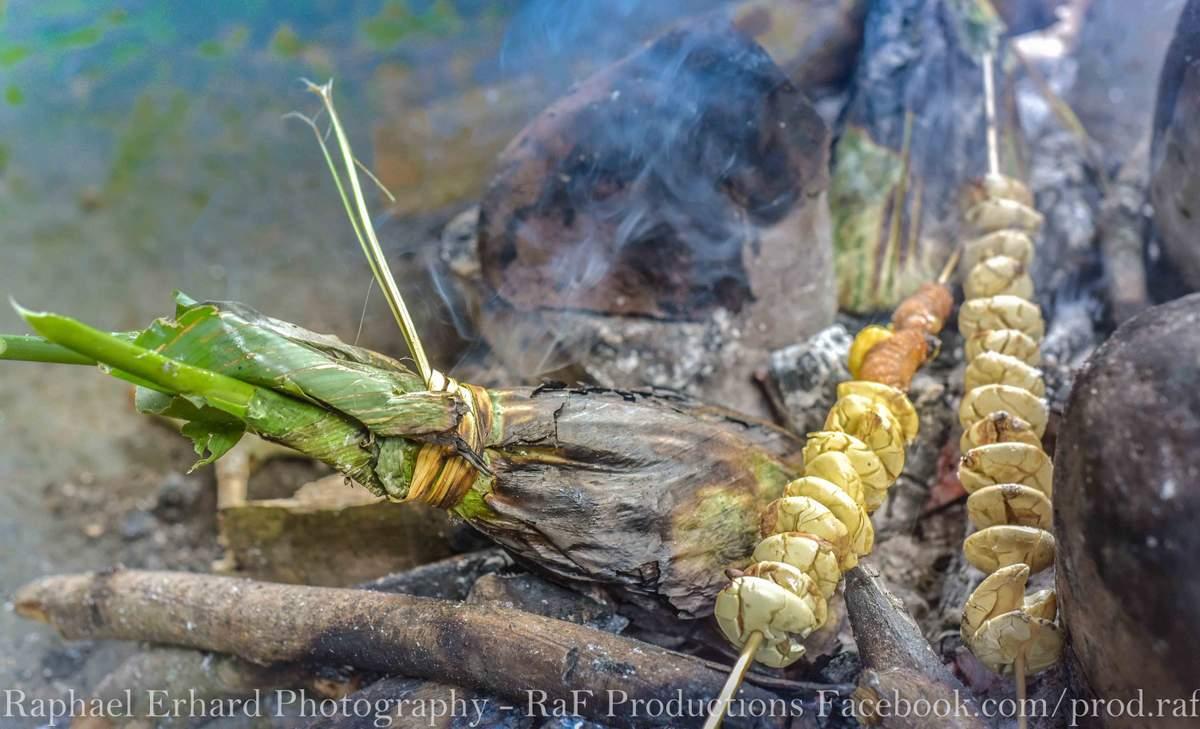
Paiche
Paiche is a freshwater Amazon fish that can grow to 8 Ft. and weigh over a hundred pounds. It has long been a staple of the jungle, grilled, fried, or baked and served with yucca. It has a mild flavor, and often jungle kitchens serve it with ají negro, a specialty hot sauce that each community makes differently-but as a rule, uses wild peppers and the leftover juices from making yucca bread.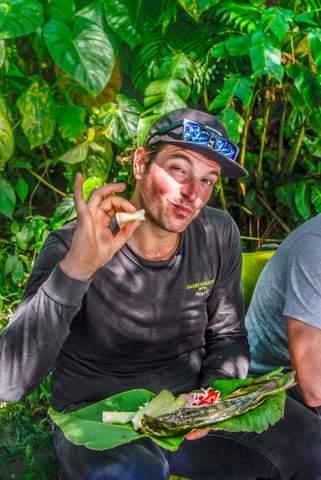
Long overlooked outside of the Amazon, Paiche has made its way into innovative kitchens around the country. Some use it for a new twist on ceviche, others put it in an encocado-a fish stew from the coast-instead of seafood, and has made appearances on menus in the states and Europe.
Piranha
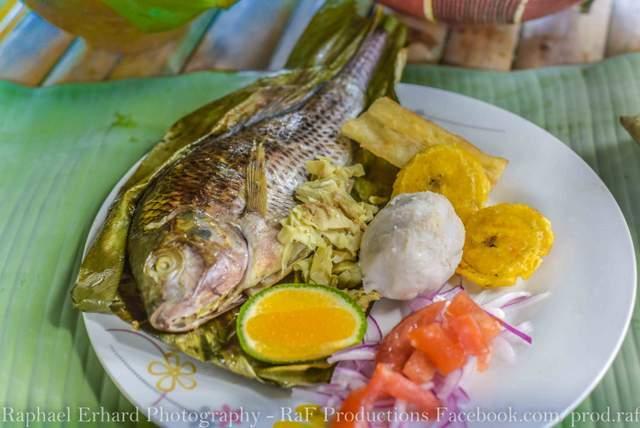 There are three different types of piranha in the Ecuadorian Amazon Basin and are found in abundance in the shallow waters of the region's lagoons, rivers, and tributaries. The small fish are often a lunch dish. Fried and served with a variety of sides, including rice, fried plantains, and salad.
There are three different types of piranha in the Ecuadorian Amazon Basin and are found in abundance in the shallow waters of the region's lagoons, rivers, and tributaries. The small fish are often a lunch dish. Fried and served with a variety of sides, including rice, fried plantains, and salad.
Soups and Stews
Caldo de Bagra
Caldo de Bagra is a robust stew that combines catfish, yucca, tomatoes, pepper, and spices into a meal that feeds the Napo River's families and communities. It is a traditional dish and a staple. Fishermen bring back the day’s catch, and the village elders oversee the preparation, bringing just the right balance of flavor and substance to the table.
Uchumanga
While the Andes have tripe and the coast has encocado, the Amazon combines the two into Uchumanga, a stew made with fish (all of the fish,) sometimes animal intestines, and a burst of spice that hits the right spot. It is the Amazon equivalent of a Ploughman’s Lunch-whatever is on hand is put in the pot and served to hungry community members.
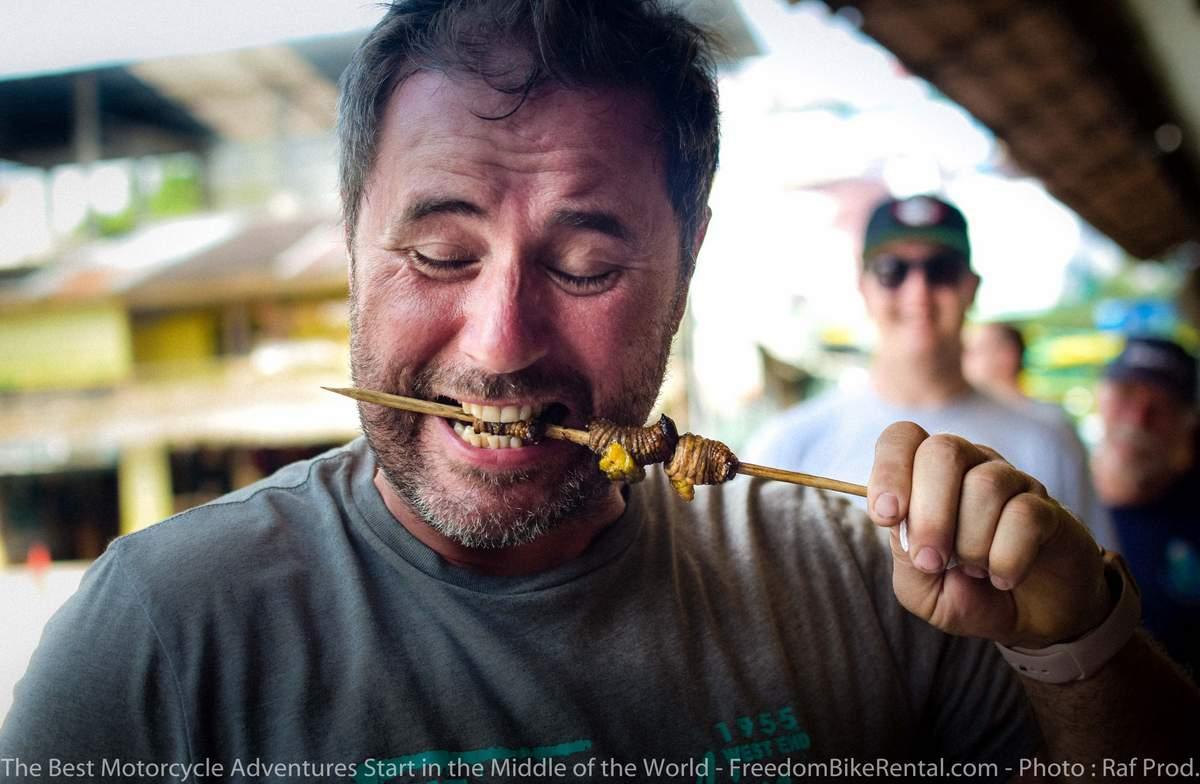
Exotic
Chontacuro or Mayón
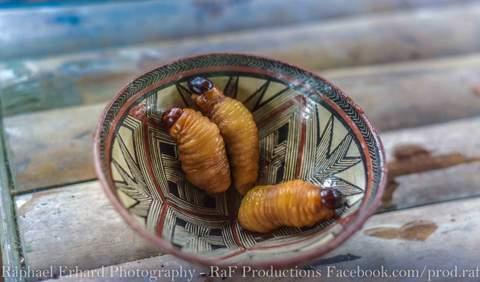 Chontacuros are thumb-sized worms that live in rotting trees until harvested. They are a signature dish of the Amazon-sold on skewers at street stands, used in traditional meals at indigenous events, and even eaten alive. More often than not, they are barbequed over open flames and eaten with fried plantains or yucca.
Chontacuros are thumb-sized worms that live in rotting trees until harvested. They are a signature dish of the Amazon-sold on skewers at street stands, used in traditional meals at indigenous events, and even eaten alive. More often than not, they are barbequed over open flames and eaten with fried plantains or yucca.
Chicha
Chicha is one of the most well-known beverages of the Ecuadorian Amazon. Traditionally it’s made by chewing yucca and spitting it into a bucket to ferment; saliva helps to break down the tuber and keep the fermenting process moving.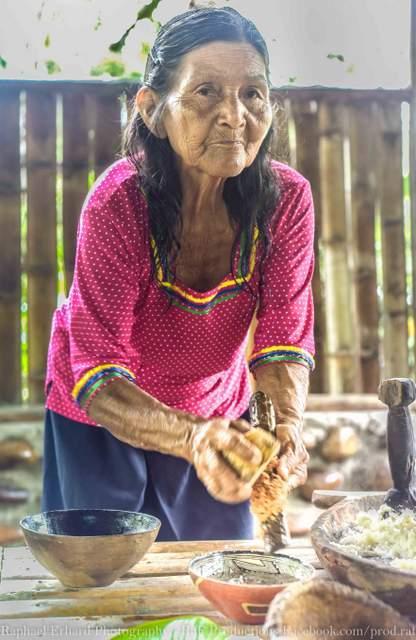
Unless you visit communities deep in the jungle, it is usually made without the saliva in the present. If you go into a Napo community where it is still made the old-fashioned way, be aware that it’s considered disrespectful to refuse the drink.
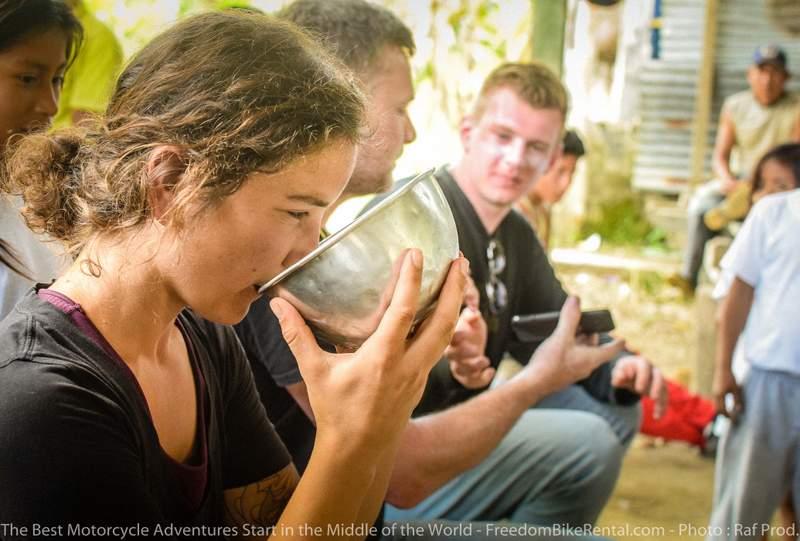 Our High Andes, Deep Amazon Tour takes you to towns and places where the area's culture and community are at center stage alongside the creatures of the wild. The way of life on the river depends on a reliance between the Oriente communities and the environment. The bonds and friendships that develop between travelers and the people who live there go beyond the beaten paths of other parts of the country. One day you might meet someone at a restaurant in one spot, and the next afternoon find that your boat driver is his brother.
Our High Andes, Deep Amazon Tour takes you to towns and places where the area's culture and community are at center stage alongside the creatures of the wild. The way of life on the river depends on a reliance between the Oriente communities and the environment. The bonds and friendships that develop between travelers and the people who live there go beyond the beaten paths of other parts of the country. One day you might meet someone at a restaurant in one spot, and the next afternoon find that your boat driver is his brother.
For more information about our off-the-beaten-path guided and self-guided tours to the Amazon and the other Ecuador regions, contact a member of our team.
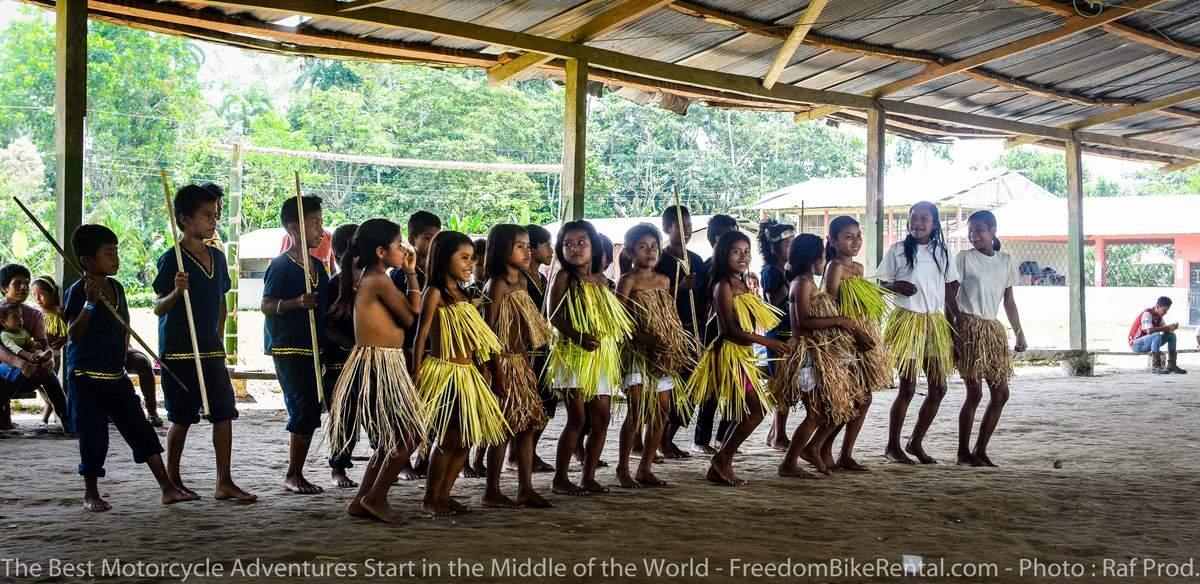
About the Author
 Jon Jared first experienced the itch for travel during summer trips with his grandparents to England, Scotland, and Wales. After visiting Zambia and traversing the mountain towns of Colorado, he moved to Ecuador in search of a new understanding of the world around him. In Ecuador, Jon has worked at hotels, restaurants, and bars; served as a local guide, and a freelance writer and editor. His work in print includes Delta Sky Magazine and the 2015 Moon Ecuador and the Galapagos guidebook.
Jon Jared first experienced the itch for travel during summer trips with his grandparents to England, Scotland, and Wales. After visiting Zambia and traversing the mountain towns of Colorado, he moved to Ecuador in search of a new understanding of the world around him. In Ecuador, Jon has worked at hotels, restaurants, and bars; served as a local guide, and a freelance writer and editor. His work in print includes Delta Sky Magazine and the 2015 Moon Ecuador and the Galapagos guidebook.


